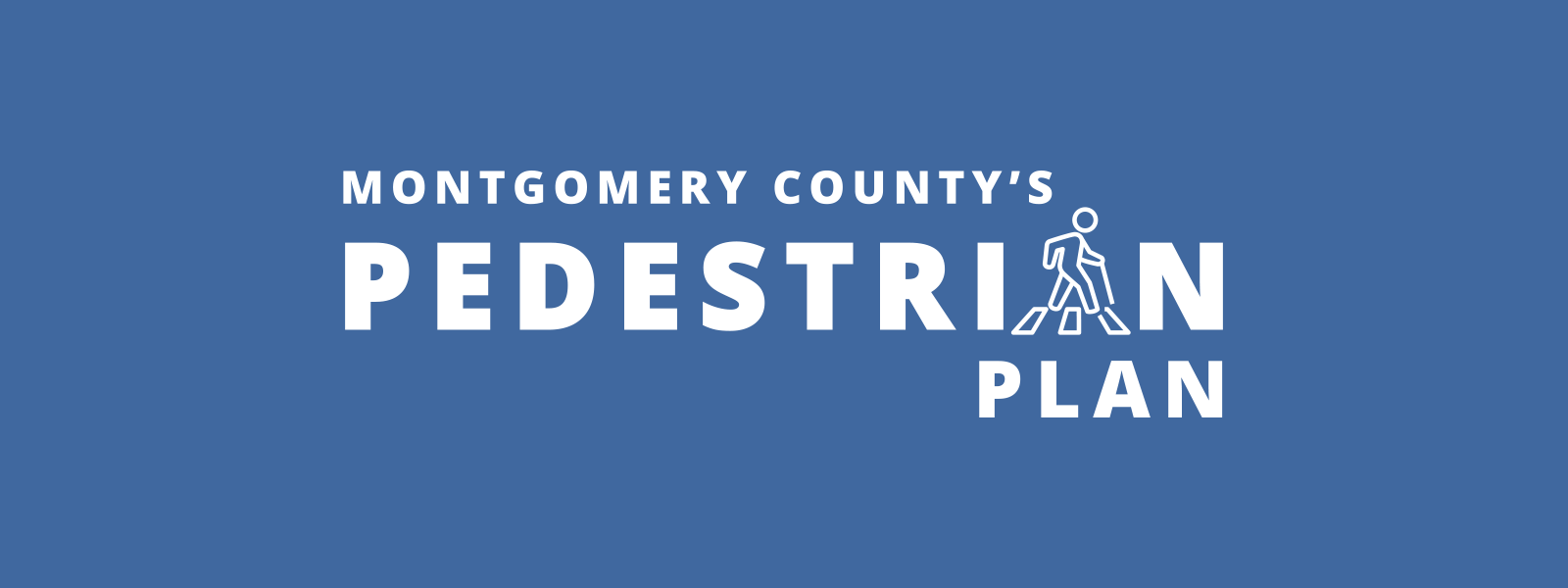
Board heard summary of community outreach and education efforts and approved the membership of the Pedestrian Master Plan’s advisory group
SILVER SPRING, MD – The Montgomery County Planning Department, part of The Maryland-National Capital Park and Planning Commission (M-NCPPC), today presented to the Planning Board an update on the Pedestrian Master Plan, including a summary of initial efforts to educate the community about the plan and inform the board of the community members chosen for the plan’s Pedestrian Advisory Group. The Pedestrian Master Plan is a comprehensive project to improve pedestrian safety and comfort across Montgomery County.
View the December 19 Planning Board Staff Report for the Pedestrian Master Plan.
Since September, Planning Department staff has hosted meetings across the county to inform and engage with residents about the plan, which aims to make walking and rolling (including with a wheelchair, stroller, cane, scooter, etc.) safe and comfortable countywide. At each meeting, residents learned about the plan and its goals and were encouraged to share ideas, concerns, and locations to aid the project team in its work. Residents were invited to view a slideshow of texts, photos, and videos county residents posted as part of the plan’s social media #WalkingHere campaign and encouraged to participate.
At the Pedestrian Plan kickoff meetings, staff received written comments from 70 people, and have received more than 20 additional comments electronically. In addition to the kickoff meetings, this fall planning staff spoke to other groups to gain background information and collect and share ideas. These groups include the Commission on People with Disabilities, Cabin John Citizens Association, Commission on Aging, Y Walks, Capitol View Park Civic Association, and more.
Planning staff also briefed the board on the development of a Pedestrian Advisory Group (PedAG), which will begin meeting regularly in early 2020. The PedAG draws membership from two places: members appointed from stakeholder groups, and members chosen through an online application process. Staff identified 20 stakeholder groups that represent the county’s geographic regions, racial/ethnic groups, development community, and pedestrian interest groups, and asked them to appoint members to the PedAG. The following list includes the identified stakeholder groups:
- Pedestrian, Bicycle, Traffic Safety Advisory Committee
- Montgomery County Chamber of Commerce
- Montgomery County Civic Federation
- Action Committee for Transit
- CASA de Maryland
- African American Advisory Group
- African Affairs Advisory Group
- Asian Pacific Advisory Group
- Caribbean American Advisory Group
- Latin American Advisory Group
- Middle Eastern American Advisory Group
- Western Montgomery Citizens Advisory Board
- Mid-County Citizens Advisory Board
- Silver Spring Citizens Advisory Board
- East County Citizens Advisory Board
- Upcounty Citizens Advisory Board
- Maryland Building Industry Association
- Montgomery County Regional Student Government Association
- Montgomery County Coalition of Parent-Teacher Associations
- Commission on People with Disabilities
The PedAG has 11 resident members, chosen from an applicant pool of 78 community members. Selected members come from across the county and bring diverse perspectives on pedestrian issues and opportunities. While some members bring technical transportation planning and engineering knowledge, all are passionate about making the county better for pedestrians. The Planning Board approved the following residents to join the PedAG:
- Javier Gamboa – Wheaton
- Helene Rosenheim – Olney
- Sherlene Lucas – Aspen Hill
- Chris Bruch – Chevy Chase
- Bernie Karns – Calverton
- Marybeth Cleveland – Shady Grove
- Cynthia Buddington – Gaithersburg
- Andrew Campbell – Woodmoor
- Deborah Brown – North Bethesda
- Anna Priddy – Forest Glen
- Anne Tulkin – Long Branch
Staff also briefed the board on the status of the Pedestrian Level of Comfort map (mcatlas.org/pedplan). This tool illustrates pedestrian comfort from “unacceptable” to “very comfortable” using factors like width of sidewalk, traffic speed, and presence of on-street parking. Once completed countywide, it will allow staff to analyze comfortable pedestrian connectivity to schools, parks, transit stations, grocery stores, and other important destinations to help prioritize plan recommendations. Staff is also pursuing requests for proposals to survey community members about pedestrian perceptions and to understand national best practices for pedestrian policy and design.
Background on Pedestrian Master Plan
The Pedestrian Master Plan, now being developed by Montgomery Planning’s Functional Planning and Policy Division, will identify best practices, analyze information from people who walk and roll and examine ways of improving the pedestrian experience using several analytical tools, including a pedestrian comfort analysis and a crash analysis. The resulting Pedestrian Master Plan will provide county leaders and agencies, such as Montgomery County Department of Transportation and the Department of Permitting Services, recommendations and guidance related to:
- Prioritization of pedestrian pathways and safe crossings.
- Pedestrian-supportive policies and operational practices.
- Pedestrian design toolkit of treatments and operational approaches to traffic calming, signal timing, accessibility features and more.
Recommendations will support making walking universally accessible to county residents of all ages and abilities and will consider walking by foot (including with a cane, a walker or a stroller), by wheelchair and by mobility scooter.
The Pedestrian Master Plan will complement the 2018 Bicycle Master Plan, Thrive Montgomery 2050 planning and other Vision Zero-related efforts to make streets safer and more accessible, including the 2019 Veirs Mill Corridor Master Plan and 2019 Aspen Hill Vision Zero Study.